Oil lamps have become popular for their romantic ambiance and relaxing glow. But not all fuel sources are equal! There are two main types of fuel used for oil lamps: lamp oil vs. kerosene lamp oil. So, which one should you choose? Well, there are a few important factors to consider.
This guide we’lli explore the differences between lamp oil and kerosene lamps. Also, how to use each fuel type and any safety considerations to keep in mind.
Table of Contents
- What Is Kerosene?
- What Is Lamp Oil?
- Alternative Types of Lamp Oil
- Lamp Oil vs. Kerosene: What Sets Kerosene and Paraffin Oil Apart?
- Lamp Oil vs. Kerosene: How Can I Maintain and Utilize My Oil Lamps?
- Lamp Oil vs. Kerosene: How to Safely Fuel My Oil Lamp?
- Lamp Oil vs. Kerosene: How to Dispose of Lamp Oil?
- FAQs
- Summary
What Is Kerosene?
Kerosene is a low-viscosity liquid that comes from petroleum. It contains hydrocarbons and has a clear to pale yellow flame color.
People use it as fuel for aviation, home heating, and cooking. Besides, kerosene is often used as a starting fluid for jet engines.
Also, Kerosene is one paraffin oil, and we use Paraffin oil in many industries. For example, the pharmaceutical, food processing, and cosmetics industries.
Further, we can use it as a lubricant and a cleaning agent. Despite their many uses, kerosene lanterns can be flammable, and you should handle them carefully.
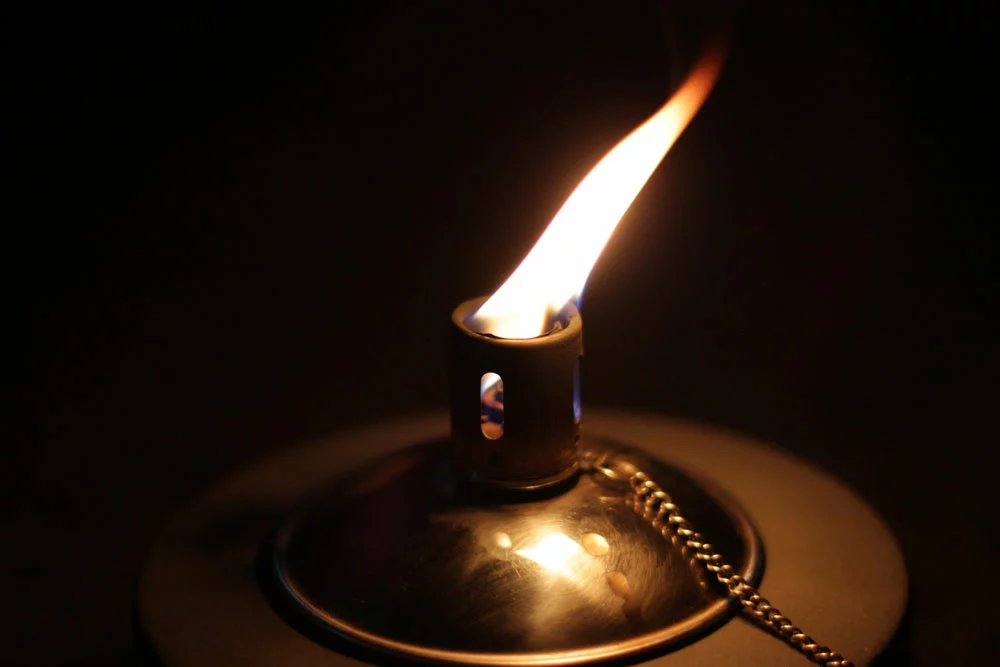
Kerosene Candle Flame
Red Kerosene
Red kerosene is an industrial lubricant. We use it to power machines like engines and generators. Since it’s tax-free, you can’t use red kerosene for road vehicles like trucks. The dye in red kerosene helps identify trucking companies trying to avoid taxes using this type of kerosene.
K-1-rated kerosenes, such as red kerosene, can power lamps. But, the foul smell from burning dye in red kerosene will damage or clog your lamp’s wick.
We could not find any scientific evidence to corroborate the claim. But, some say red-dyed kerosene is dangerous when burned in lamps. To err on caution, we tell you against using it.
K-1 Kerosene
K-1 kerosene is the most available grade. You can find it in most major retail stores or filling stations. Also, you can use this type of kerosene in space heaters and lamps.
An upside to K-1 kerosene is that it’s very cheap. Besides, you can use it outdoors (e.g., with a portable stove). The scent of sulfur and other impurities from burning K-1 kerosene is less noticeable.

A kerosene lamp
What Is Lamp Oil?
Lamp oil is a type of fuel that comes from crude oil. It contains a mixture of hydrocarbons, molecules containing hydrogen and carbon atoms.
Unlike kerosene, lamp oil is odorless and has a clear appearance. Also, it is less refined than kerosene, so it contains higher levels of impurities, such as sulfur.
Additionally, it burns cleaner than kerosene, producing less soot and smoke. Finally, lamp oil leaks kerosene’s unpleasant smell, making it more pleasant to use indoors.
Alternative Types of Lamp Oil
Of course, you want to decrease the amount of sulfur and other impurities in the air. There are alternative types of lamp oil available on the market. These include:
Canola Oil
If you’re looking for a lamp oil substitute, look no further than rapeseed oil or canola oil. This semi-viscous liquid comes from the seeds of the rapeseed plant. Also, it burns much cleaner than kerosene.
In fact, it’s so clean-burning that it’s often used as a base oil for biodiesel production. It’s not quite as cheap as kerosene. But, it’s still a viable option to avoid using petroleum products in the home.
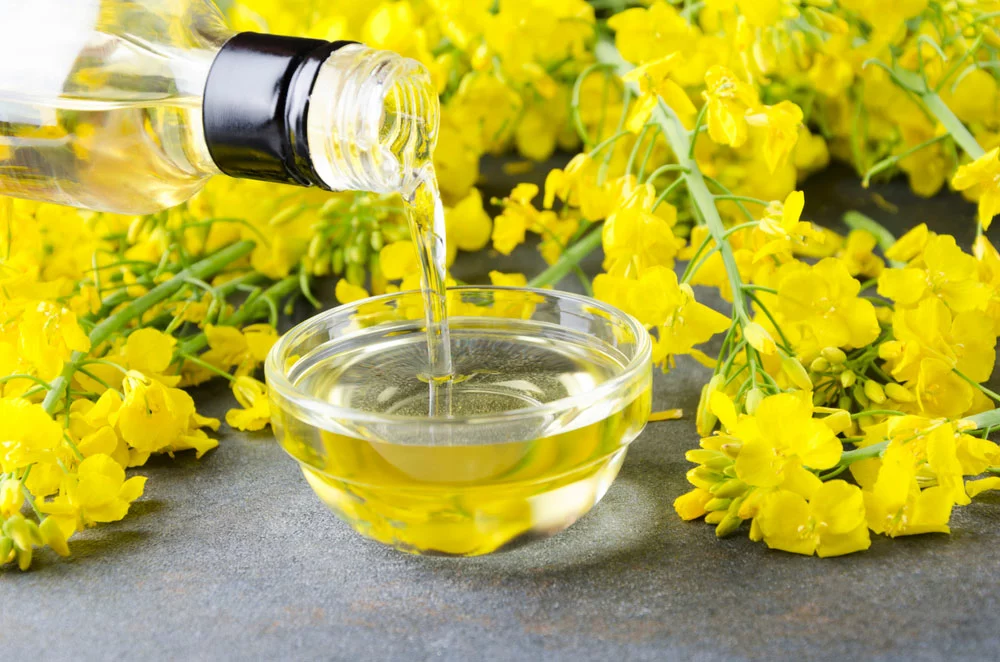
Canola oil
Castor Oil
Castor oil is a vegetable oil. People extract it from the seed of the castor plant (Ricinus communis). People have used the oil for centuries as a lubricant, fuel, and lighting oil.
Also, it contains triglycerides, which are molecules made up of three fatty acids. The unique structure gives castor oil its distinctive properties. For example, it is more viscous (thicker) than other oils and biodegrades more.
Castor oil produces a bright white light when burned in a lamp, making it an ideal choice for oil lamps.
Olive Oil
Olive oil comes from the fruit of the olive tree. It is renewable, odorless, non-toxic, and smokeless, making it a healthier option for indoor use. Also, it is much less likely to cause fires, making it a safer choice for home use, so people have used it for centuries as cooking oil, lamp oil, and medicine.
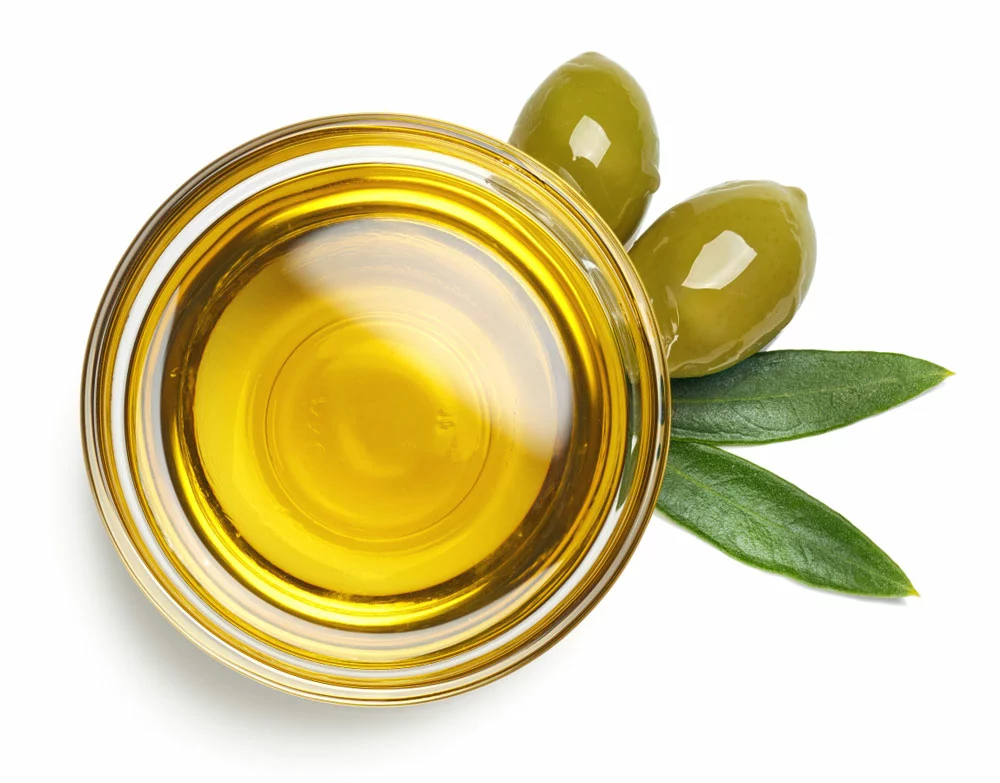
Olive oil
Fish Oil
Before people found out about kerosene and paraffin oils, they used whale oil for lamp fuels. Yet, whales are now endangered, so whale oil is scarce and not used.
Even though fish oil has some disadvantages, it is still a good option for lamp oil in some cases. The main advantages are that it is like whale oil and is still available in many places.
Also, it doesn’t burn as other oils do, making it difficult to see in low-light conditions. Additionally, fish oil can leave an unpleasant smell if used for too long. Also, it creates smoke if burned for extended periods.
Lamp Oil vs. Kerosene: What Sets Kerosene and Paraffin Oil Apart?
Odor
The smell is the first thing you should consider when picking a lamp’s fuel. If it gives off a rank byproduct, it’s not meant to be used inside.
While kerosene fumes can be dangerous and harmful, paraffin is better for indoor use. It doesn’t come with odor-inducing chemicals.
Burn Time/Length
Generally, paraffin will burn longer than kerosene because of its viscosity and purity.
Brightness
One of the main benefits kerosene has over lamp oil is that it burns much brighter. Although lamp oil may last longer, kerosene provides more light. Therefore, kerosene lamps are often used outdoors.
You can see them from further away and provide more light. Additionally, since they’re used outside, any fumes emitted aren’t as big of an issue.

Kerosene lamp with rays of light
Uses
Kerosene can power many types of industrial equipment. For example, you can use them for home generators, space heaters, and lamps. It’s popular because it works for so many purposes and is inexpensive. In contrast, paraffin lamp oil is only suitable for lamps.
Refining and distillation
Paraffin oils go through a more extensive distillation process. But kerosene goes through a less rigorous one.
Chemical differences
Paraffin is an alkane hydrocarbon with the formula CnH2n+2. But, Kerosene comes from petroleum oil, so it is a flammable hydrocarbon.
Lamp Oil vs. Kerosene: How Can I Maintain and Utilize My Oil Lamps?
Here are some tips on how to fill and use your lamps:
- Unscrew the wick and collar from your lamp.
- Fill your lamp with oil, making sure to follow all safety precautions.
- Put the wick lamp back in and set it so that it’s above the wick holder—but not too much.
- Light the flat wicks
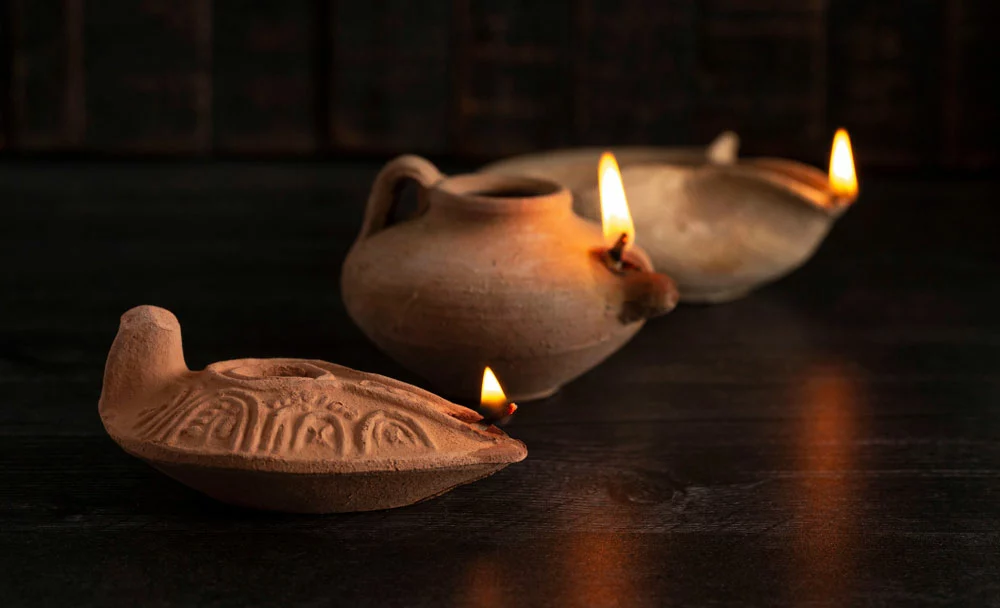
Handmade Oil Lamps
Lamp Oil vs. Kerosene: How to Safely Fuel My Oil Lamp?
Always be sure to use the proper fuel for your oil lamp. Also, never use dangerous materials like mineral oil, rubbing alcohol, or pure gasoline. If these substances burn, they release harmful vapors and aromatics, which can cause serious respiratory illnesses.
Also, improper use of fuel can lead to fire or explosion. You should never fill your oil reservoir with ignitable substances, such as acetone, propane, turpentine, or household cleaners.
Lamp Oil vs. Kerosene: How to Dispose of Lamp Oil?
Now the last thing to consider is how to dispose of the fuel. Here are some tips to keep in mind:
Giving it to a Local Hazardous Waste Collection Site
For safe disposal, you can take your lamp oil to a local hazardous waste collection site. This way, they will recycle it instead of adding it to the landfill.
Also, some cities offer oil exchange programs. You can bring your used lamp oil and swap it for a new container.
Give It to Your Local Fire or Gas Station
You can check with your local fire or gas station to see if they accept used lamp oil. Most often, they are willing to take it and burn it off. Sometimes, you can even get a few cents back in exchange.
Donate It to a Recycling Company
You can search online for a local recycling company and drop off your used lamp oil. They will take it, filter it to remove any impurities, and re-use it in their products or machinery. Not only will you be helping the environment, but you can also get a tax incentive for donating it.

A Recycling Company
Donate It to Your Local Charity or Community Center
Sometimes you don’t have a recycling company nearby. So you can contact your local charity or community center to see if they will accept used lamp oil. Many of these organizations are always looking for donations, so it’s a great way to help and make an impact.
Give It to a Friend or Loved One
If you know someone who still uses oil lamps, consider giving them your used fuel. They appreciate the gesture. Also, a great way to reduce waste and keep resources out of landfills.
Use Your Leftover Lamp Oil Again
Finally, you can always use your leftover lamp oil again. Make sure to filter it first and follow all necessary safety precautions.
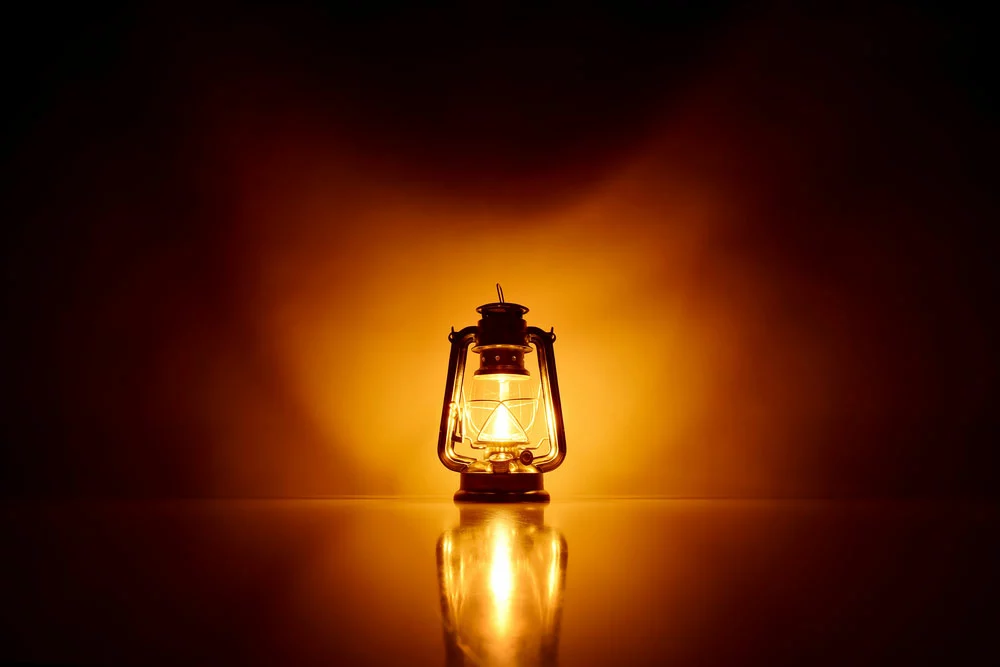
Burning kerosene lamp
FAQs
Can oil lamps be bad for my health?
Oil lamps are bad for your health if you don’t use the proper fuel. Always be sure to follow safety precautions. Also, never use flammable or hazardous materials for fuel.
For an oil lamp, what is the best type of oil I can use?
Olive oil is the best for an oil lamp. It has a high flash point and is non-toxic, making it a safe choice for indoor use.
Is it safe to use oil lamps inside my home?
They can be safely indoors if you use the right fuel and follow all safety precautions.
Heating oil vs. kerosene: which one is best for your furnace?
Heating oil is best for your furnace. It has a higher flash point than kerosene, which makes it safer and more efficient. Also, heating oil burns cleaner than kerosene and produces fewer byproducts.
Summary
Phew! You’ve mastered the ins and outs of oil lamps. Now you know how to fuel and dispose of your lamp. Always stay safe by following safety guidelines and using the proper fuel for your lamp.
We hope this article has been helpful, and you can now use your oil lamp with ease and enjoy the warmth and light it provides.








































